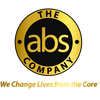The Core Connection: Core Training for Seniors – Strength and Stability at Any Age
By Dr. Joseph Gagnon
As the senior population continues to grow, it’s essential for gyms to cater to their unique fitness needs. One of the most important areas to focus on is core strength, which plays a vital role in maintaining balance, stability, and mobility. While core training is often associated with younger athletes, it is equally critical for seniors. A strong core helps prevent falls, improves movement efficiency, and enhances overall quality of life.
For gym owners, offering programs and equipment that support core training for seniors can help attract and retain this growing demographic. In this blog, we’ll explore why core training is essential for seniors and how you can structure your fitness offerings to better serve their needs.
Why Core Strength Matters for Seniors
The core muscles—which include the abdominals, obliques, lower back, and hips—are crucial for maintaining balance and stability. As we age, natural decreases in muscle mass and strength can increase the risk of falls and injuries, particularly hip fractures. Strengthening the core can significantly reduce these risks by enhancing balance and coordination.
For seniors, core strength is about more than fitness—it’s about preserving independence. Ensuring that gym members have access to core training programs helps them stay mobile, active, and self-reliant, making daily activities like standing up from a chair or navigating stairs safer and easier.
Core Training to Prevent Falls
Falls are one of the leading causes of injury among seniors, and they often occur due to a lack of stability or poor balance. A strong core provides the foundation for fall prevention by helping seniors maintain upright posture and stability during movement. Improving core strength also aids in navigating uneven surfaces, transitioning from seated to standing, and turning quickly.
Core exercises like seated marches or standing side leg lifts can be incorporated into your group fitness classes or personal training sessions to help seniors improve balance. Additionally, offering equipment like the Ab Solo gives members a fun and engaging way to develop core strength without high-impact movements, making it accessible to seniors of all fitness levels.
Low-Impact Core Exercises for Seniors
When structuring fitness programs for seniors, it’s important to emphasize low-impact core exercises that minimize stress on joints. Seated exercises, such as seated leg lifts or seated twists, can help engage the core without placing undue strain on the body. These exercises can be performed with the support of a chair, ensuring proper form and safety for seniors with mobility issues.
Standing exercises, like gentle side bends or standing marches, improve balance and activate the core. For seniors who prefer a more dynamic workout, using equipment like the TireFlip 180® can engage the core in a controlled, safe manner, while providing an exciting way to stay active.
The Role of Flexibility and Mobility in Core Training
In addition to core strength, flexibility and mobility are essential for seniors. As the body ages, muscles and joints tend to stiffen, which can limit range of motion and increase the risk of injury. Incorporating mobility exercises, such as pelvic tilts or seated forward bends, into your senior fitness programs can help keep muscles and joints flexible and limber.
Offering stretches and mobility-focused routines before or after core exercises will help members improve their overall movement and reduce discomfort. Tools like the SledMill® from The Abs Company provide a low-impact, joint-friendly way to promote both core strength and flexibility through safe, controlled movements.
Building a Sustainable Core Routine for Seniors
For gym owners, creating a consistent and accessible core training routine is key to helping seniors achieve long-term success. Encourage members to incorporate just 10-15 minutes of core exercises a few times a week, focusing on exercises that feel comfortable and gradually increasing intensity as they gain strength.
Listening to feedback from your senior members and adjusting the exercises based on their comfort levels is crucial for maintaining engagement and avoiding injury. Equipment like the AbCoaster® provides a smooth, controlled motion, allowing seniors to strengthen their core without putting unnecessary stress on their joints. This can help create a sustainable, effective fitness routine that seniors will stick with for years to come.
Conclusion: Strength and Stability for a Senior-Friendly Gym
Core training is not just for younger athletes; it’s essential for people of all ages, especially seniors who want to remain independent and active. By offering senior-focused core training programs and incorporating safe, low-impact equipment like the Ab Solo, TireFlip 180®, and AbCoaster®, gym owners can better serve this growing demographic. A focus on core strength helps improve balance, reduce the risk of falls, and enhance mobility, ensuring your senior members enjoy a higher quality of life and remain loyal gym patrons.

